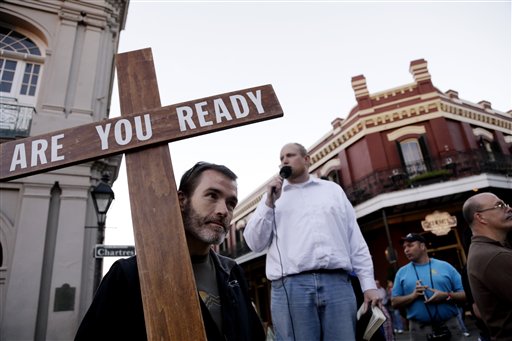The companion case to Niemotko v. Maryland (1951), Kunz v. New York, 340 U.S. 290 (1951), overturned a New York City ordinance under which officials had refused to renew a permit for street preaching to Carl Jacob Kunz, a Baptist minister whose earlier sermons had ridiculed and denounced other religious beliefs. Chief Justice Frederick M. Vinson wrote the 8-1 decision for the Supreme Court, which struck down the ordinance as a prior restraint of First Amendment rights.
Court overturned an ordinance under which officials refused to renew a street preaching permit
In his opinion, Vinson observed that the ordinance did not specify any power of revocation. He cited a series of earlier cases — including Lovell v. City of Griffin (1938) and Hague v. Committee for Industrial Organization (1939) — in which the Court had condemned licensing systems that “vest in an administrative official discretion to grant or withhold a permit upon broad criteria unrelated to proper regulation of public places.” He believed these decisions pointed to “the invalidity of such prior restraints upon the right to speak.” The city was free to impose “punitive remedies” on speech that led to disorder or violence, but such “punishment” had to be distinguished from unconstitutional “suppression.”
Justice Felix Frankfurter’s concurring opinion attempted to situate the decision in the context of related cases.
Dissenters emphasized the street preacher’s attacks on other races and faiths
Justice Robert H. Jackson’s dissent emphasized that Kunz’s previous street sermons had attacked other races and faiths, accusing Catholicism of being “a religion of the devil” and denouncing Jews as “Christ-killers.” Pointing out that street preachers focus on “a captive audience,” Jackson believed that the epithets Kunz used were “insulting or fighting words,” which, according to Chaplinsky v. New Hampshire (1942), “by their very utterance inflict injury or tend to incite an immediate breach of the peace” (emphasis added). What the majority identified as improper “prior restraint” was simply recognition that Kunz’s “past conduct” had “caused some disorder,” and that his future conduct was likely to do the same.
For Jackson, the New York regulation fell among the limited cases in which the state had the right of both “prevention” and “punishment.” He further argued that it was unhelpful to take a concept like prior restraint that applied chiefly to freedom of the press and apply it to freedom of speech. He contended that a permit system could reasonably protect a city against “fanatics who take possession of its streets to hurl into its crowds defamatory epithets that hurt like rocks.”
Despite Jackson’s vigorous dissent, Kunz appears to remain good law. It warns against any licensing statutes that vest discretion for religious or political speech in the licensing authorities.
John Vile is a professor of political science and dean of the Honors College at Middle Tennessee State University. He is co-editor of the Encyclopedia of the First Amendment. This article was originally published in 2009.

